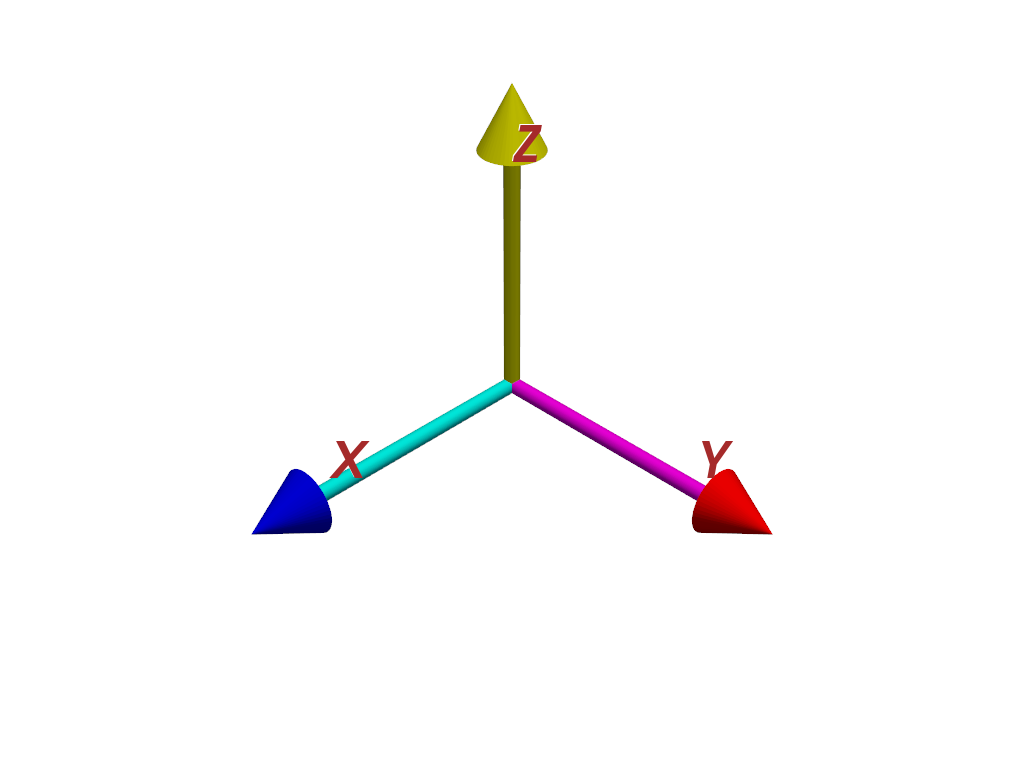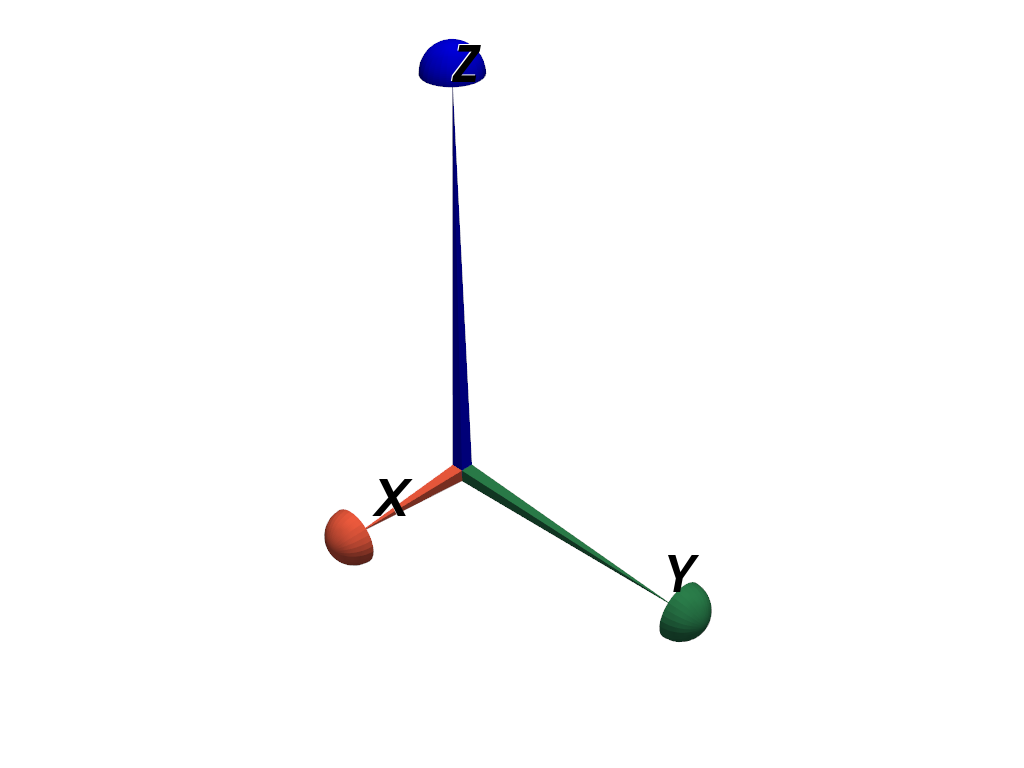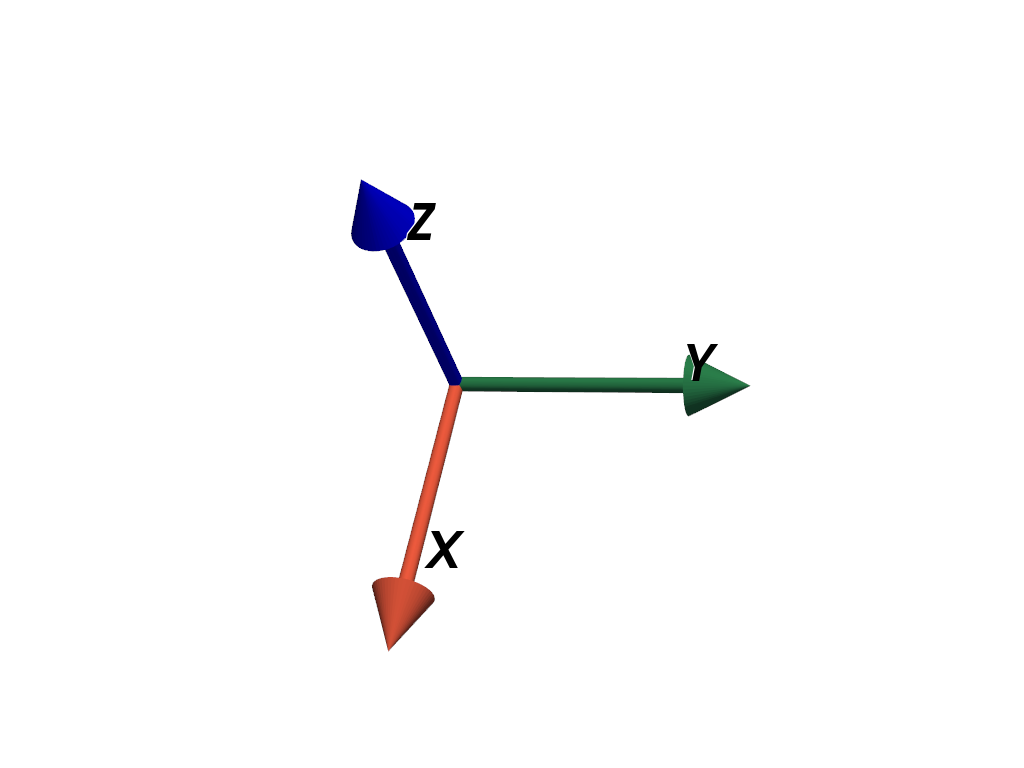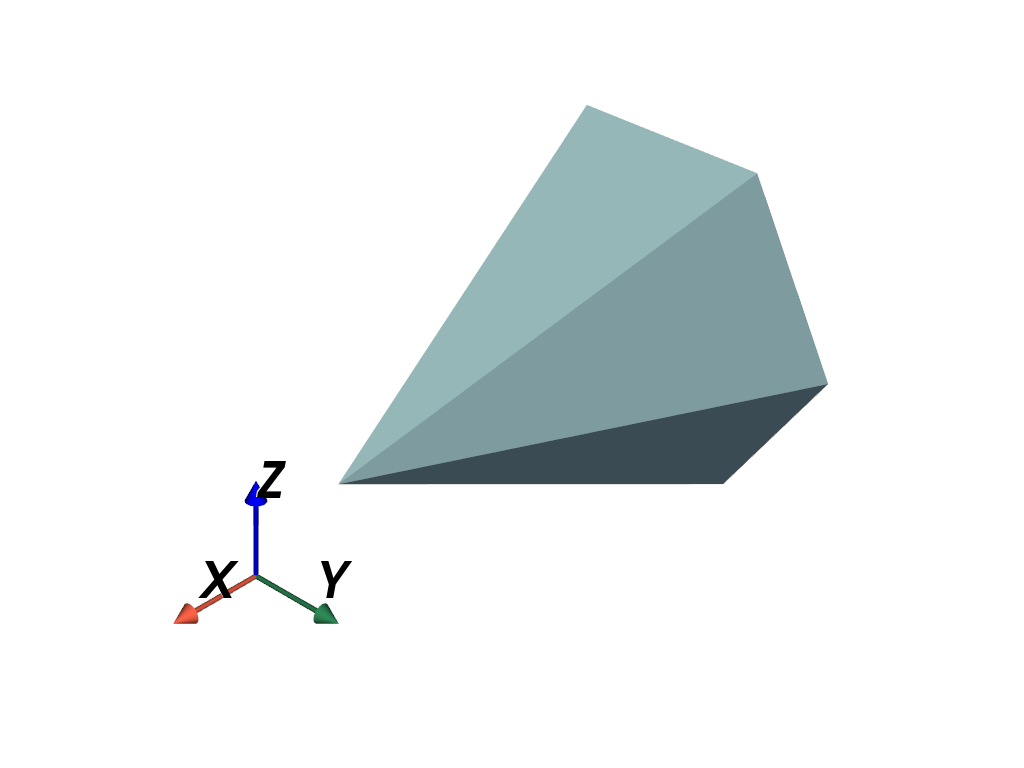pyvista.AxesAssembly#
- class AxesAssembly(*args, **kwargs)[source]#
Assembly of arrow-style axes parts.
The axes may be used as a widget or added to a scene.
- Parameters:
- x_label
str, default: ‘X’ Text label for the x-axis. Alternatively, set the label with
labels.- y_label
str, default: ‘Y’ Text label for the y-axis. Alternatively, set the label with
labels.- z_label
str, default: ‘Z’ Text label for the z-axis. Alternatively, set the label with
labels.- labels
Sequence[str], optional, Text labels for the axes. This is an alternative parameter to using
x_label,y_label, andz_labelseparately.- label_color
ColorLike, default: ‘black’ Color of the text labels.
- show_labelsbool, default:
True Show or hide the text labels.
- label_position
float|VectorLike[float],optional Position of the text labels along each axis. By default, the labels are positioned at the ends of the shafts.
- label_size
int, default: 50 Size of the text labels.
- x_color
ColorLike|Sequence[ColorLike],optional Color of the x-axis shaft and tip.
- y_color
ColorLike|Sequence[ColorLike],optional Color of the y-axis shaft and tip.
- z_color
ColorLike|Sequence[ColorLike],optional Color of the z-axis shaft and tip.
- position
VectorLike[float], default: (0.0, 0.0, 0.0) Position of the axes in space.
- orientation
VectorLike[float], default: (0, 0, 0) Orientation angles of the axes which define rotations about the world’s x-y-z axes. The angles are specified in degrees and in x-y-z order. However, the actual rotations are applied in the around the y-axis first, then the x-axis, and finally the z-axis.
- origin
VectorLike[float], default: (0.0, 0.0, 0.0) Origin of the axes. This is the point about which all rotations take place. The rotations are defined by the
orientation.- scale
VectorLike[float], default: (1.0, 1.0, 1.0) Scaling factor applied to the axes.
- user_matrix
MatrixLike[float],optional A 4x4 transformation matrix applied to the axes. Defaults to the identity matrix. The user matrix is the last transformation applied to the actor.
- name
str,optional The name of this assembly used when tracking on a plotter.
Added in version 0.45.
- **kwargs
Keyword arguments passed to
pyvista.AxesGeometrySource.
- x_label
See also
AxesAssemblySymmetric- Axes Objects
Example showing different axes objects.
Examples
Add axes to a plot.
>>> import pyvista as pv >>> axes = pv.AxesAssembly() >>> pl = pv.Plotter() >>> _ = pl.add_actor(axes) >>> pl.show()

Customize the axes colors. Set each axis to a single color, or set the colors of each shaft and tip separately with two colors.
>>> axes.x_color = ['cyan', 'blue'] >>> axes.y_color = ['magenta', 'red'] >>> axes.z_color = 'yellow'
Customize the label color too.
>>> axes.label_color = 'brown'
>>> pl = pv.Plotter() >>> _ = pl.add_actor(axes) >>> pl.show()

Create axes with custom geometry. Use pyramid shafts and hemisphere tips and modify the lengths.
>>> axes = pv.AxesAssembly( ... shaft_type='pyramid', ... tip_type='hemisphere', ... tip_length=0.1, ... shaft_length=(0.5, 1.0, 1.5), ... ) >>> pl = pv.Plotter() >>> _ = pl.add_actor(axes) >>> pl.show()

Position and orient the axes in space.
>>> axes = pv.AxesAssembly(position=(1.0, 2.0, 3.0), orientation=(10, 20, 30)) >>> pl = pv.Plotter() >>> _ = pl.add_actor(axes) >>> pl.show()

Add the axes as a custom orientation widget with
add_orientation_widget():>>> import pyvista as pv
>>> axes = pv.AxesAssembly(symmetric_bounds=True)
>>> pl = pv.Plotter() >>> _ = pl.add_mesh(pv.Cone()) >>> _ = pl.add_orientation_widget( ... axes, ... viewport=(0, 0, 0.5, 0.5), ... ) >>> pl.show()

Methods#
Get |
|
|
Set |
Attributes#
Position of the text label along each axis. |
|
Size of the text labels. |
|
Return or set the axes labels. |
|
Color of the x-axis shaft and tip. |
|
Text label for the x-axis. |
|
Color of the y-axis shaft and tip. |
|
Text label for the y-axis. |
|
Color of the z-axis shaft and tip. |
|
Text label for the z-axis. |